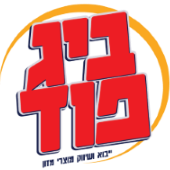Have you ever been curious about tarot card cards and their magical significance? Tarot cards have been used for centuries as a tool for divination and self-reflection. In this thorough guide, we will discover the history of tarot card cards, how they are used, and what each card stands for.
The Background of Tarot Cards
Although the origins of tarot card cards are rather mystical, they are believed to have originated in Europe in the late 14th century. The earliest well-known tarot decks top mediums were created for honorable households in Italy and France, and were used for playing card games rather than divination.
It had not been up until the late 18th century that tarot cards started to be utilized for spiritual and magical purposes. In the 19th century, tarot cards acquired popularity amongst wizards, that believed that the cards held hidden meanings and insights into the future.
Today, tarot card cards are extensively utilized for divination, reflection, and self-exploration. There are thousands of various tarot card decks offered, each with its own unique symbolism and images.
- Rider-Waite-Smith Tarot: Among the most prominent tarot decks, recognized for its famous images and significance.
- Thoth Tarot: Produced by Aleister Crowley and illustrated by Lady Frieda Harris, this deck is abundant in mystical significance.
- Tarot card de Marseille: A traditional tarot deck with roots in 16th century French playing cards.
How Tarot Cards are Made Use Of
Tarot card cards are generally made use of for prophecy, which is the technique of seeking understanding or guidance through mythological methods. A tarot card analysis includes evasion the purple garden cards, laying them out in a particular spread, and translating their meanings based upon their positioning and symbolism.
Each tarot card has its own distinct meanings and interpretations, which can vary relying on the reader and the context of the reading. Some usual tarot card spreads consist of the Celtic Cross, the Three-Card Spread, and the Past-Present-Future spread.
Other than divination, tarot card cards can additionally be made use of for reflection, journaling, and self-reflection. Many people make use of tarot card cards as a tool for individual development and self-contemplation, looking for much deeper insights into their feelings, ideas, and actions.
Recognizing Tarot Card Card Meanings
While the definitions of tarot card cards can differ relying on the deck and the visitor, there are some common analyses that are commonly accepted in the tarot area. Below are a few examples:
- The Fool: Stands for clean slates, spontaneous activities, and virtue.
- The Magician: Represents creativity, indication, and the power of will.
- The High Priestess: Represents instinct, mystery, and the subconscious mind.
Picking a Tarot Card Deck
With many tarot card decks offered, picking the ideal one for you can seem overwhelming. When choosing a tarot deck, consider the following factors:
- Art work: Choose a deck with images that resonates with you on a personal degree.
- Symbolism: Search for a deck that uses signs and imagery that speaks to you intuitively.
- Instinct: Count on your impulses when picking a tarot deck. Choose one that feels right for you.
Verdict
Whether you are brand-new to tarot cards or a seasoned visitor, tarot card can be an effective tool for self-discovery and individual growth. By discovering the history of tarot card cards, comprehending their definitions, and choosing the right deck for you, you can unlock the knowledge and insight that tarot cards need to provide.
Keep in mind, tarot card is not about anticipating the future, but instead concerning obtaining a much deeper understanding of on your own and the world around you. So take your time, depend on your instinct, and let the magic of tarot guide you on your journey of self-discovery.
